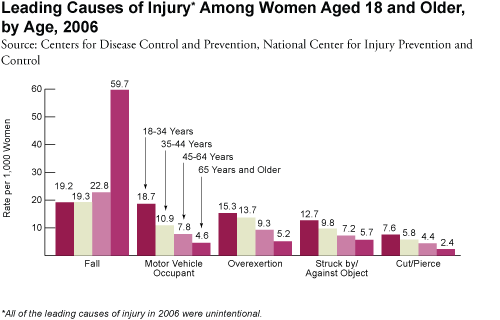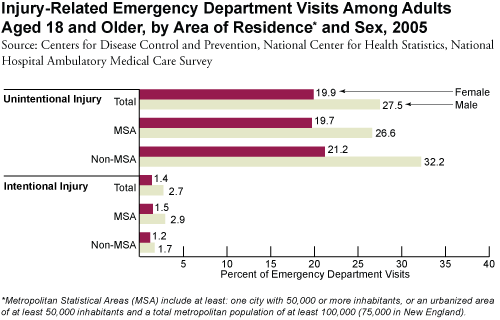WASHINGTON — When Adele Freeman fired five .38-caliber bullets into her boyfriend in 2000, she contributed to an often-overlooked statistic within the sometimes-deadly world of partner abuse: namely, that more than one-third of all homicides each year connected to domestic violence are perpetrated by women.
Capital News Service
"Men can be victimized in the same way women can," said Laura Martin, the Calvert County, Md., state's attorney who helped secure Freeman's first-degree murder conviction in 2002. "And it's not just the violence. It's about control, dominion, power," she said.
The fact of female abusers and male victims is often lost in the discussion of domestic violence. In fact, women's advocates have used selective statistics — the same federally funded survey that found women are equally as abusive to men — to bolster their plea for funding and services.
That absence of attention to the men's side of the coin has contributed to an imbalance of services for men who are victimized in abusive relationships.
"This is the best-kept secret on family violence," said Murray Straus, a sociologist who led the commissioned survey in 1975, and again in 1985 with the same results. "There is a tremendous effort to suppress and deny these results."
No one disputes that when physical violence occurs, women are prone to more serious injury than men; however, Straus and others caution that this should not obscure the fact that about a third of men sustain injuries, or are killed, from partner violence.
Bill Hall, of Adam's House, a health and wellness center in Suitland, Md., agreed. He called domestic violence an "equal opportunity" issue that often gets overlooked by the 24 or so women's advocacy centers throughout the state.
"It's kind of hard to find programs that cater to men and boys," he said. "Most of the agencies I know of refer men to us ... as abusers."
Each Monday night, he and his wife, Stacie, counsel two groups of some 30 women and 65 men. Within each group, about 70 percent have been court-ordered to attend the 90-minute-long counseling sessions, aimed at curtailing future violent behavior.
In dealing with those who've punched out girlfriends and choked wives, socked boyfriends, stabbed exes and even shot at spouses, both Halls agree that domestic violence is anything but a one-way street of male-on-female violence.
"Most women who abuse in the relationship [do so] because they feel pressured and don't feel that they can communicate any other way," Stacie Hall said. "Because he's just not listening, and [men] are much bigger than we are."
But other advocacy groups ignore female-on-male violence.
Take one particular bullet point from a brochure sponsored by Maryland Network Against Domestic Violence, a state advocacy coalition backed largely by federal funds: "Every 15 seconds a woman is battered in the United States by her husband, boyfriend or live-in partner."
To Michaele Cohen, the nonprofit's executive director, that statistic sounds about right. "There are male victims, of course, but the majority of victims who come forward are female," she said.
Cohen said other data suggesting that men suffer from equal rates of violence are unreliable.
"That methodology is very controversial because, you know, you're saying that every hit is equal and you're not taking into account context," she said. "I think you have to look critically at those studies."
Yet both sides of the debate are actually looking at the same studies: that 1975 survey, updated 10 years later, that revealed nearly identical rates of abuse by men and by women.
Cohen did not know of the connection to the statistics in her group's brochure, but said anecdotal evidence supports their contention.
"I don't really want to quibble about the particular stats," she said. Instead, Cohen pointed to the "huge number" of female victims she sees in need of assistance each and every day.
"I'm not relying on statistics. I'm relying on 30 years of experience."
That reliance on nonscientific data is no shock to Richard Gelles, who co-authored the 1975 and 1985 surveys with Straus.
"People cherry-pick their numbers for advocacy studies," he said. "This is what advocates do, and that's not sad. What's sad is policymakers don't create evidence-based policy."
Gelles, dean of the School of Social Policy and Practice at the University of Pennsylvania, offered up the Violence Against Women Act as an example.
Since 1994, the federal law has doled out some $4 billion to states — dollars aimed at eliminating domestic abuse, stalking and sexual assault through increased financial, legal and housing support to women. The act has also upped the penalties against offenders and more closely knits prosecutors, judges, police and victims advocates to the effort.
Testifying before the Senate Judiciary Committee last May, Gelles said the law, which is set for reauthorization in 2011, mostly ignores services and resources for male victims of abuse.
"No other federal legislation dealing with an aspect of family violence, including child maltreatment, sexual abuse and elder abuse, singularly focuses on one sex," he testified.
So what of services available to men?
Laura Dugan, a public-policy expert and associate professor at the University of Maryland, said you might not know of a need for men based on the services available to them.
"All of these service providers, they do not let men on their premises," she said, recounting a case she was familiar with in which an alcoholic wife was abusing her husband. "She really abused him. And he had nowhere to go."
In Maryland, the House of Ruth, one of Maryland's largest domestic-violence service providers, will assist men, but active outreach efforts seem in short supply.
"We also work with men," said program development director Cheri Parlaman, referring to an abuser intervention program
http://seattletimes.nwsource.com/html/nationworld/2013743521_domesticviolence26.html







